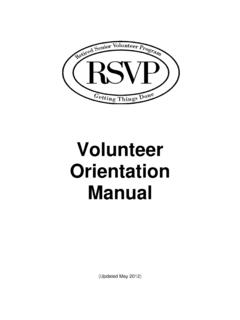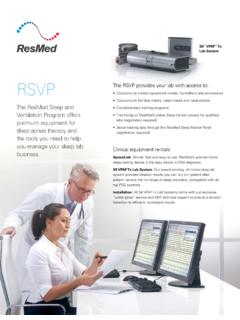Transcription of Static-99 FAQ - Defense For SVP
1 1 Static-99 FAQ 1. Who can the Static-99 be used with? The Static-99 is intended to be used with adult male offenders who have committed either a contact or non-contact sexual offense, and reached the age of 18 prior to release to the community. Institutionalized or developmentally delayed offenders may also be scored on the instrument. 2. Should the Static-99 be used with statutory offenders? It can be used on offenders who committed their offenses as a juvenile but are being released as an adult (see p. 5). The Static-99 is not appropriate for individuals whose only sexual crime involves consenting sexual activity with a similar age peer ( , Statutory Rape {a charge} where the ages of the perpetrator and the victim are close and the sexual activity was consensual).
2 (p. 5.) The criteria for deciding there if the ages are close and the relationship consensual: a) The alleged victim states the sexual interaction was cooperative and has never claimed otherwise; b) The offender had no pre-existing power relationship over the alleged victim ( , swim instructor, therapist); AND c) If the victim was younger than the age of consent and of correspondingly approximately equal cognitive development to the offender, the offender was less than 3 years older than the person. If the victim was younger than the age of consent and the offender is obviously of lesser cognitive developmental capacity than the victim, the offender is less than 5 years older than the person.
3 3. Who should the Static-99 not be used with? Females offenders of any age, male offenders under the age of 18, persons who have been charged or convicted of consenting acts between adults that are otherwise illegal (such as prostitution) and persons who have never been charged with a sexual offense (see p. 5). 4. Is training required to use the Static-99 ? As with any risk assessment instrument, training on the instrument is highly recommended, and is usually required for clinical assessment instruments. However, unlike clinical instruments, an advanced degree is not required. Persons using the Static-99 should receive training from a trainer who is approved by the author of the instrument.
4 Typically, training lasts one day, and includes modules on how the Static-99 was constructed (history, sampling, etc.), appropriate and inappropriate uses of the instrument, how to administer and score the instrument, proper interpretation of the results and corresponding recidivism estimates, and coding of several practice cases. 25. What information is needed to score the Static-99 ? According to the rules, an official criminal history record is required to score the instrument (p. 11), and self-report is acceptable only under extremely limited circumstances (p. 4). Thus, only persons with access to the necessary criminal history information should be scoring the Static-99 .
5 It is acceptable to rescore the Static-99 when it is received from a secondary source and/or more information becomes available. 6. Can I score the Static-99 with missing data? The only item that can be omitted from the instrument is #2 Ever Lived With. The item should be scored as a zero (p. 4). Other sources should be consulted when information is missing or suspect. 7. What is the static -2002 and does it differ from the Static-99 ? The static -2002 represents a conceptual overhaul to the Static-99 where two items were dropped, six were added, and questions now represent five scales: age, persistence of sexual offending, deviant sexual interests, relationship to victims, and general criminality.
6 The items removed were #2 Ever Lived With and #3 Index Non-Sexual Violence Any Convictions . Additional training is recommended for agencies that would like to implement the static -2002. 8. What is the RRASOR and how does it differ from the Static-99 ? Should I use it instead of the Static-99 ? The RRASOR, or Rapid Risk Assessment for Sexual Offense Recidivism is a pre-cursor to the Static-99 ; which was created by merging the SACJ-Min from the UK with the RRASOR from Canada. The four items culled from the RRASOR are: age at release, prior sexual offenses, extrafamilial victims, and male victims. The authors recommend using the Static-99 in place of the RRASOR because the Static-99 includes more information and has been more extensively cross-validated.
7 9. Where can I get practice cases? There is a self-quiz in the coding manual (Appendix Two, p. 61), and the New York State Office of Sex Offender Management has created a two-part quiz. The first part covers basic concepts of the Static-99 , and the second includes examples for each of the ten questions. These are available at , click on Training . 10. When implementing the Static-99 for the first time in a community correction setting, how old can the index offense be before I should not use the Static-99 ? It is possible to use the Static-99 for sexual offenders who were released into the community following an index sexual offence during the past 10 years.
8 For offenders who received a community sentence, the release date would be the date of sentencing. The recidivism rates for offenders with older release dates should be adjusted according to the time-free in the community (see Appendix 1, p. 59). Evaluators should note, however, that Static-99 scores become increasingly hard to interpret the longer the time since the last release from a sexual offence. 311. Should the risk estimates ever be adjusted for time free in the community? Does that include time under community supervision such as probation or parole? When an offender has been offense-free in the community, the adjusted recidivism estimates provided in Appendix One (p.)
9 59) can be used. Please note that time free INCLUDES periods of community supervision. However, when an offender incurs a new arrest charge, the nature of the offense and charges must be examined to determine which risk estimates now apply to the offender. With strict supervision there are limited opportunities to reoffend, as such, those with this level of supervision should not get credit for not reoffending ( , benefit from a reduction in recidivism estimates). Typically, there is a bump in recidivism rates when strict supervision is reduced or ended completely. Also, for those who are relatively under-supervised and do not have a new arrest, credit should be given within the context of opportunities to reoffend ( , if the opportunity to reoffend has been limited, it may not be an indicator of desistence).
10 Remaining offense free means no new sexual or violent convictions, nor a non-violent conviction that would have resulted in more than minimal jail time (1-2 months). (p. 59). Guidelines for interpretation of this rule in New York: A. A new misdemeanor and felony sexual or assaultive charges require use of the original recidivism estimates. B. Violations typically do not count as a new crime since they are only punishable by up to 15 days in jail. However, the nature of the offense should be considered ( PL trespass is a violation, however, if one objectively knows that the trespassing behavior was sexual in nature the event should count and the coder use the original estimates).







